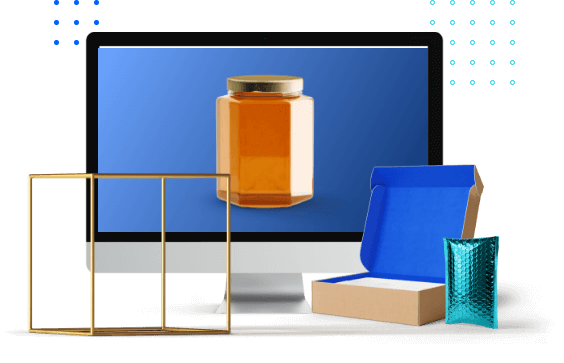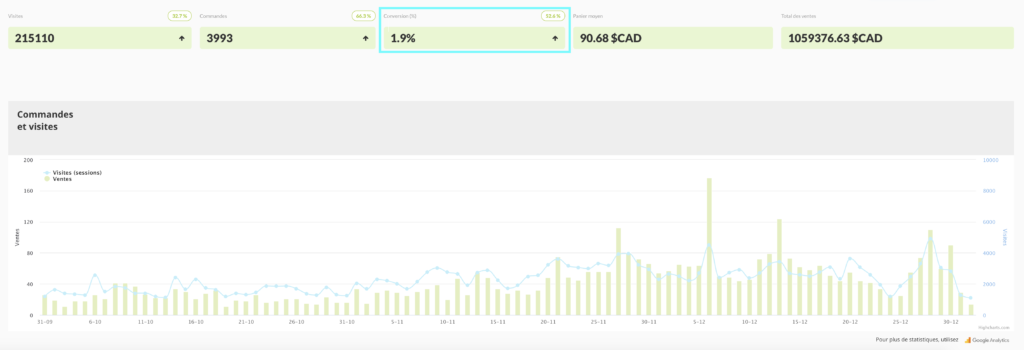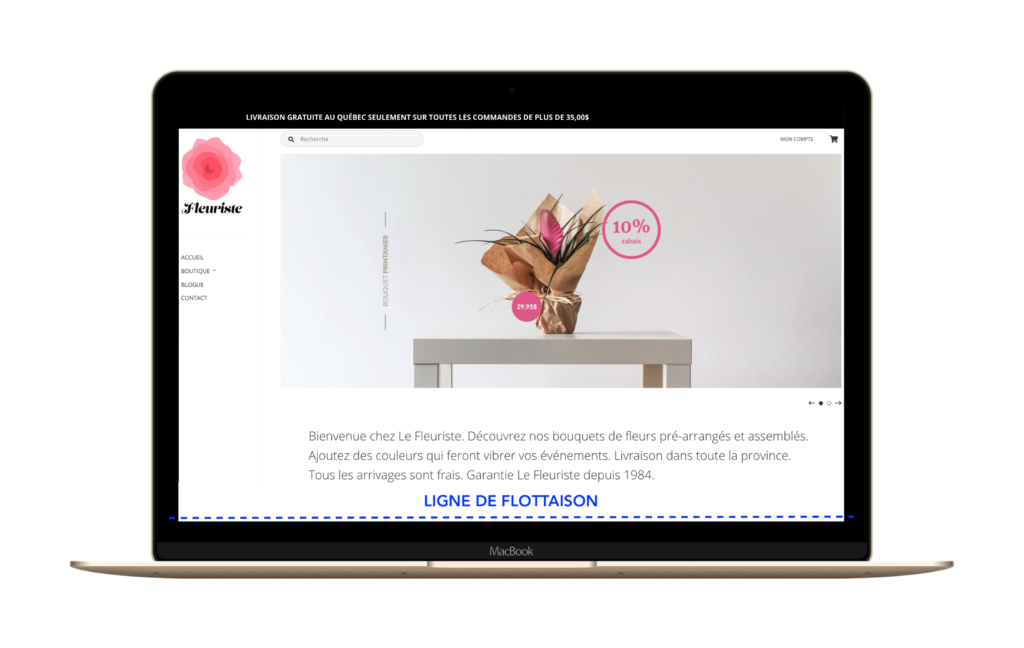10 e-commerce tactics to reduce your bounce rate and increase your conversion rate
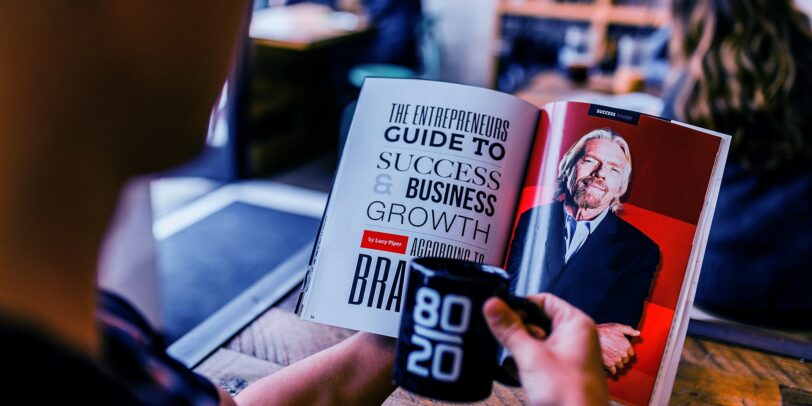
Attracting many visitors is one thing, converting them into buyers is another!
One of the key factors to consider is the bounce rate.
Synonymous with good ergonomics, it provides information on the behaviour of your visitors and makes it possible to determine the percentage of visitors leaving your online store without having consulted a single page or having interacted with the destination page.
But what is a good bounce rate? How can you analyse it in order to understand the reasons that drive your visitors to leave your online store? And how to reduce it in order to increase your sales and generate revenue?
- The first step is to identify the underlying causes;
- The 2nd step is to identify improvement levers and then establish incentive strategies to convert visitors into buyers and recover lost sales.
We share 10 tactics to reduce your bounce rate and increase your conversion rate.
Analyze bounce rate and conversion rate
1. Analyze the bounce rate on Google Analytics
Via the Google Analytics, you can see in real time your bounce rate and its evolution over time.
Simply go to Behaviour – Overview; or Site Content – All pages.
Several factors can explain a high bounce rate, including :
- Poor design, navigation, usability making the user experience on your online shop unattractive and unattractive
- A message that is not consistent and relevant with your product offer, not respecting the promise of your marketing campaigns.
- Poor ergonomics and accessibility of essential information
- A lack of clear calls for action.
To give you an idea of where you stand, the average bounce rate of an e-commerce site is 47%.
2. Identify the conversion rate on your dashboard or on Google Analytics
Conversion rate is a very important metric to consider, being the most profitable way (beyond advertising) to generate revenue.
It corresponds to the percentage of visitors who have made a sale on your online shop.
To situate yourself and give you an idea, the average conversion rate of an e-commerce site is 2%.
You must therefore make every effort to reach this target.
On your dashboard from your votre interface Panierdachat or on Google Analytics, you will obtain the conversion rate in real time and will have an indication of its evolution.
Thus, the analysis of your bounce rate will allow you to :
- understand why your visitors do not interact with your homepage;
- and then to efficiently optimise your online shop;
- in order to improve your conversion rate.
10 e-commerce tactics to reduce your bounce rate and boost your conversions
In order to decrease the conversion tunnel and increase conversions, you must :
- remove obstacles
- and multiply purchase incentives.
Optimise your UX to increase your chances of conversion
1. A Distraction-Free Interface
The first impression of your online shop is crucial.
The navigation on your homepage should be simple and concise.
Opt for a tidy, intuitive architecture and visual organisation with a simple and minimalist design for direct access to essential information.
2. Control the waterline
Your objective: guide and accompany your visitors to your product pages.
Therefore, remember to place your product pages first and at the top of your home page, in the visible part of the screen :
- the main arguments and elements of reassurance such as free delivery, discounts etc.
- the links of your categories/products and all relevant pages.
NB: The waterline is different according to each medium (Desktop – Tablet – Mobile) and browser. So remember to check and test each page. of your online shop.
Make sure that each of your pages, especially your product pages, are perfectly optimised to ensure the fluidity of each step of the path (conversion tunnel) that your customer will take until the completion of his purchase.
Conversion tunnel diagram
Home > Category page > Product page > Checkout.
3. Reduce your customer’s cognitive load by creating a customer journey
It is essential not to overload the homepage with information, as this can lead to confusion and disorientation of your customers.
The customer journey must be fluid, explicit, homogenous and unambiguous, and must naturally lead them to their needs.
Each page of your shop must contain internal links that are logical and consistent with each other, as your customer could also potentially arrive through different entrance doors.
Refine and Adapt your value proposition
4. Clear and attractive
Your value proposition must be perceived and understood immediately to meet your client’s needs.
The slogan/message must be clear, distinctive and convincing formulating an attractive offer, clearly stating the benefits brought to capture the attention of your visitor as quickly as possible, precisely in 8 seconds, and awaken his curiosity.
The objective is to create a strong emotional bond by leading them to continue their journey of discovery beyond the landing page.
In order to make your value proposition relevant, you must study the competition, know your target audience to anticipate their expectations and define a perfectly adapted customer itinerary.
Knowing and perfectly targeting your customer’s personality can increase your conversions by up to 300% and make them feel concerned by the product offer.
5. Adjust your pricing policy
If you are selling basic products, price plays a key role in the purchasing decision.
Play on price perceptions and establish a clever pricing strategy.
Discounts or promotions give your customer the impression of good deals and encourage additional purchases.
Several techniques exist such as :
- a round, clear and confident price
- a broken price at $199.99 instead of $200
- a package price including several products together
- an exclusive price at a flash sale etc.
You can carry out price variation tests, according to the seasonality of each product, and evaluate the impact on the conversion rate.
If your products are rather unique or original, your customers will be more emotionally driven and seduced by the product’s particularities.
6. Personalise the customer experience
Study the data collected and the history of previous purchases; perform predictive analyses to :
- propose relevant recommendations for complementary products
- or promotional codes on products targeted for their future needs.
33% of customers would decide to break ties with a brand for lack of personalisation.
Build a loyal customer base quickly by creating a proximity link through personalised email campaigns with segmented lists of your customers.
7. Strengthen the credibility of the site
By providing transparent information about your brand and its values. One of the obstacles that can prevent people from buying is lack of trust.
Remember to reassure your visitors by adding social proof on your homepage, category and product pages:
- Clearly highlight your product policy: stock availability, security of payment etc.
- Clearly highlight your return policy: money back guarantee, returns accepted within so many days, etc.
- Highlight your features products and popular categories/collections
- Include logos, certification, reviews, testimonials etc.
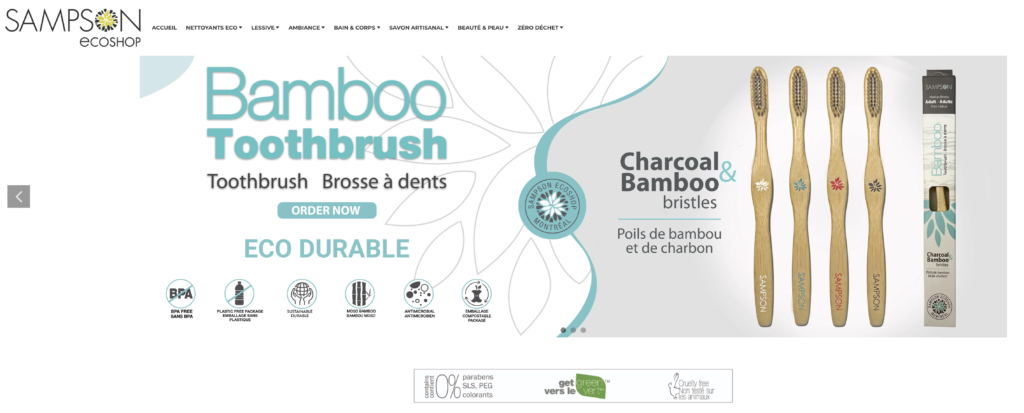
Optimize your Design to increase your chances of conversion
8. Interactive Design
Opt for an interactive design to increase the engagement of your visitors.
To spice up your online shop :
- Integrate videos to communicate your brand or to sublimate your products
- Use engaging colors
- Product overview selectors to highlight the details of your products and give a dynamic effect
- Showcase your products
- Add a pop up window to the entrance of your web shop can significantly increase your conversions.
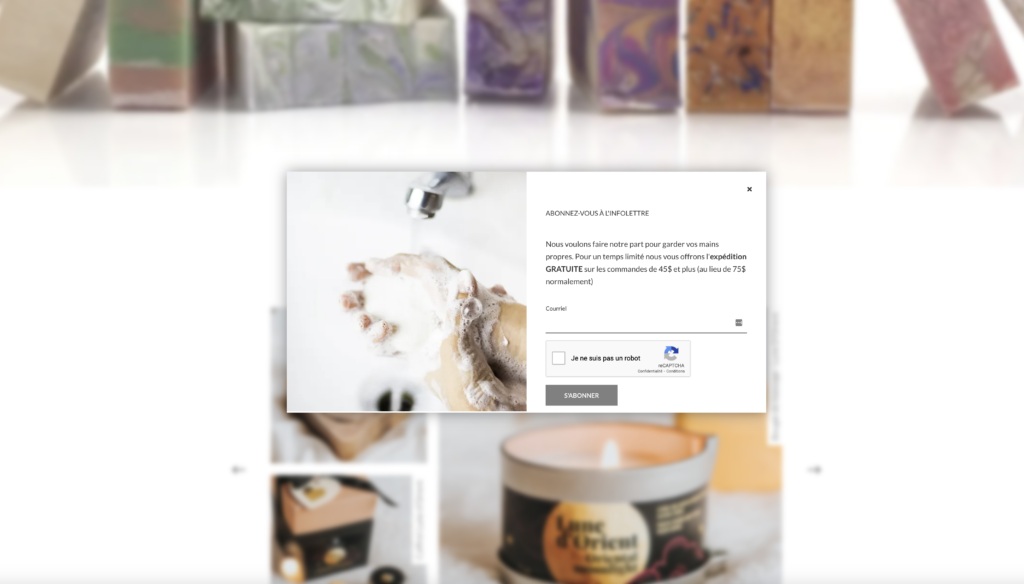
The aesthetics of the example pop-up is in symbiosis with the brand image and the message is clear, bringing a direct benefit.
NB: We have set a cookie so that the pop-up window only appears once per user, so as not to appear too intrusive.
9. Calls to action
Insert call buttons, messages or images with clear objectives, focusing on urgency.
Play on colour schemes, style, visual charts to add emphasis and highlight them.
Vary the look according to the objectives; repeat their position in strategic locations for visitors in a hurry.
10. Focus on “on page” calls to action
To focus your customer on one action rather than several with different intermediaries to get the conversion process started earlier.
